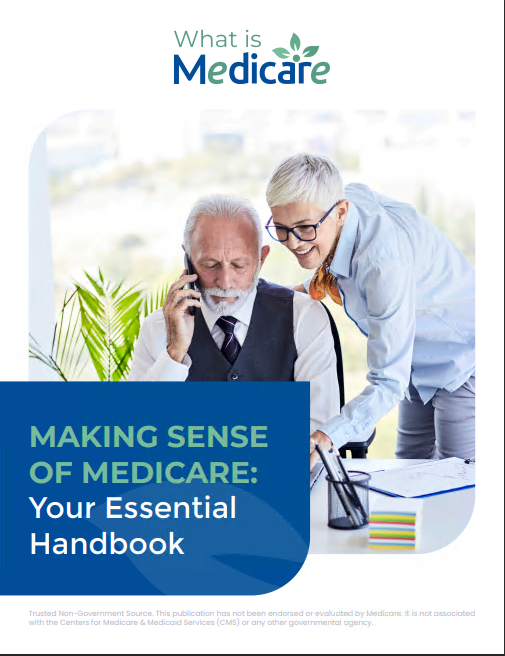Key Takeaways
-
Misunderstanding Medicare coverage rules can lead to unexpected and costly medical bills. Knowing what is and isn’t covered will help you avoid surprise expenses.
-
Gaps in coverage exist, and assuming all services are included could be a mistake. Understanding deductibles, copays, and out-of-pocket limits will help you plan accordingly.
Medicare Coverage Doesn’t Include Everything You Might Expect
Medicare is an essential program for millions, but it doesn’t cover every medical service. Many people assume Medicare takes care of all their healthcare needs, only to find themselves with unexpected bills. To avoid surprises, let’s clear up some common misconceptions about what Medicare actually covers.
Understanding Medicare’s Coverage Gaps
While Medicare covers many necessary medical expenses, there are several areas where coverage is limited or nonexistent. Some of the biggest gaps include:
-
Long-term care – Medicare doesn’t cover custodial care in nursing homes or assisted living facilities.
-
Routine dental, vision, and hearing care – Exams, eyeglasses, and hearing aids are generally not included.
-
Overseas medical expenses – Medicare coverage is extremely limited outside the U.S.
-
Certain prescription drugs – Not all medications are covered under Medicare Part D.
-
Alternative therapies – Services like acupuncture, chiropractic care beyond spinal adjustments, and holistic treatments often fall outside Medicare’s scope.
-
Cosmetic procedures – Elective surgeries and treatments for aesthetic purposes are not covered.
Knowing these gaps exist can help you plan ahead and explore alternative options.
Deductibles and Copays: The Costs You’re Responsible For
Many people think Medicare pays for everything after they enroll, but that’s not the case. You’re still responsible for certain costs, including:
-
Medicare Part A deductible – You pay this amount before hospital coverage kicks in.
-
Medicare Part B deductible and coinsurance – Part B covers outpatient care, but you still owe a deductible and typically 20% of the cost of services.
-
Prescription drug costs – Even with Part D, there are deductibles, copays, and out-of-pocket maximums.
-
Skilled nursing facility coinsurance – After a certain number of days, you must pay part of the cost.
-
Outpatient services – Some tests, imaging, and procedures require a copay or coinsurance.
-
Durable medical equipment (DME) – Items like wheelchairs, walkers, and oxygen tanks often require coinsurance payments.
These expenses can add up quickly if you’re not prepared.
Thinking Medicare Covers 100% of Your Medical Bills
Even with Medicare, most healthcare services come with out-of-pocket costs. Here’s how different parts of Medicare share expenses with you:
-
Medicare Part A covers hospital stays but has deductibles and coinsurance.
-
Medicare Part B covers outpatient care, but you pay a portion of the costs.
-
Medicare Part D helps with prescriptions, but you have copays and coverage limits.
-
Medicare Advantage plans offer bundled benefits, but coverage varies, and you still have cost-sharing responsibilities.
-
Home healthcare – Medicare covers some in-home care, but only if deemed medically necessary and under strict conditions.
It’s important to know that Medicare isn’t free healthcare—it’s a system with cost-sharing built in.
The Impact of Late Enrollment Penalties
Many people delay enrolling in Medicare, thinking they can sign up whenever they want without consequences. However, there are penalties for missing enrollment deadlines:
-
Medicare Part B late enrollment penalty – If you don’t sign up when first eligible, your monthly premium increases for life.
-
Medicare Part D late enrollment penalty – A penalty applies if you don’t enroll in drug coverage when first eligible.
-
Medicare Supplement Plan late enrollment – Some supplemental plans may require medical underwriting if you don’t enroll when first eligible.
Understanding these deadlines can help you avoid higher costs later on.
Assuming All Doctors Accept Medicare
Not all healthcare providers accept Medicare, which can create unexpected expenses. Before receiving treatment, confirm that your doctor:
-
Participates fully in Medicare – This means they accept Medicare’s payment terms and charge you only what Medicare allows.
-
Is a non-participating provider – These doctors accept Medicare but can charge slightly higher rates.
-
Has opted out of Medicare – Some providers do not accept Medicare at all, meaning you must pay full price.
-
Accepts your specific Medicare plan – Some Medicare Advantage plans have provider networks that limit your choices.
Always check with your healthcare provider before making an appointment.
Emergency Coverage Limitations
Medicare covers emergency medical situations, but there are some limitations:
-
Ambulance services – Medicare covers transportation to the nearest hospital if it’s medically necessary, but it may not cover non-emergency ambulance rides.
-
Foreign emergency care – Medicare coverage outside the U.S. is extremely limited, and you may need additional coverage if you travel frequently.
-
Observation vs. inpatient status – Being placed under observation in a hospital doesn’t count as an inpatient stay, which can affect coverage for follow-up care.
-
Urgent care centers – Coverage depends on whether the provider is within your Medicare network.
Knowing these details can help you avoid unexpected medical bills in an emergency.
Understanding Out-of-Pocket Maximums
While Medicare Advantage plans have out-of-pocket maximums, Original Medicare does not. This means that under Original Medicare, there’s no limit to how much you could pay in a year.
-
Original Medicare: No cap on out-of-pocket expenses.
-
Medicare Advantage: Annual out-of-pocket maximums apply, limiting how much you pay for covered services.
-
High-cost procedures: Expensive treatments like chemotherapy or dialysis can lead to high out-of-pocket expenses under Original Medicare.
This is an important distinction, especially if you require frequent medical care.
Your Prescription Drug Costs May Vary
Medicare Part D helps cover prescription drugs, but there are still cost considerations:
-
Different formularies: Each Part D plan has its own list of covered drugs.
-
Tiered pricing: Generic drugs usually cost less than brand-name medications.
-
Coverage phases: There are stages, including a deductible phase and catastrophic coverage, which affect your out-of-pocket costs.
-
Prior authorization and step therapy: Some medications require approval before coverage kicks in.
Reviewing your drug plan each year ensures you have the best coverage for your medications.
What You Should Do to Avoid Coverage Mistakes
Medicare is complex, but there are ways to ensure you’re making the best choices:
-
Review your coverage annually – Plans and costs change, so it’s important to compare options each year.
-
Understand your costs – Be aware of deductibles, copays, and coverage limits.
-
Check provider acceptance – Confirm your doctor accepts Medicare before getting treatment.
-
Avoid late enrollment penalties – Sign up during your initial enrollment period to prevent lifetime penalties.
-
Look into additional coverage – Consider supplemental options if you need more comprehensive protection.
-
Keep records of your medical visits – Documentation can help in case of billing disputes.
Taking these steps will help you stay covered and avoid unnecessary expenses.
Making Sure You’re Covered for What You Need
Understanding your Medicare benefits can save you from unexpected medical costs. If you’re unsure about your coverage or need help selecting the right plan, getting in touch with a licensed agent listed on this website can provide professional guidance tailored to your needs.










